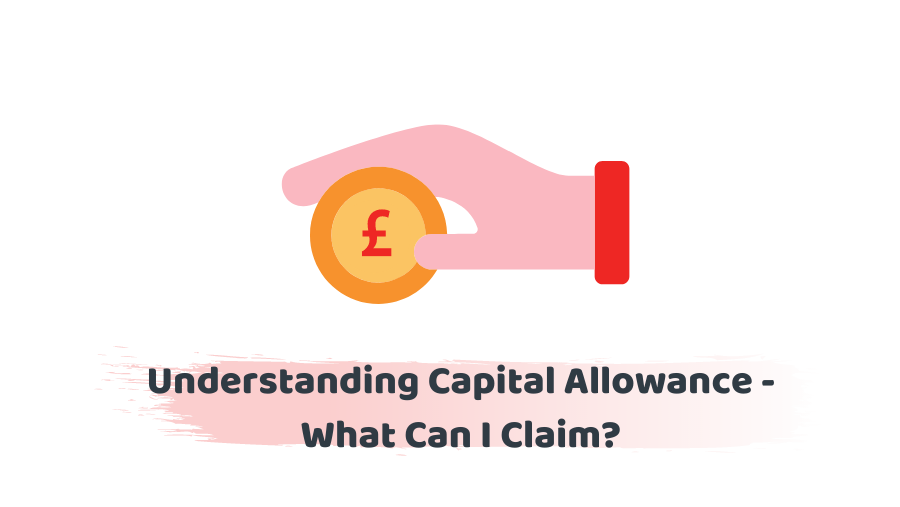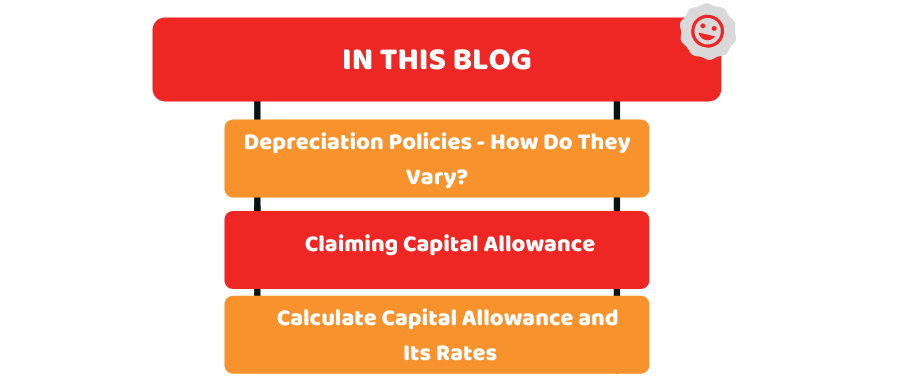To make tax equitable and fair while calculating the taxable profits, HMRC’s way is capital allowance. It aims to provide accurate HMRC depreciation rates during publication. Regardless of whether a business entity is a sole trader, partnership, or limited company, capital allowance is the tax equivalent of depreciation.
This blog aims to look at claiming capital allowance to make you understand how to minimize your business’ tax bills. This includes the following:
- Depreciation Policies: How Do They Vary?
- Claiming Capital Allowance
- Calculate Capital Allowance and HMRC Depreciation Rates
If you are seeking guidance on capital allowance for your lost assets, feel free to get in touch with our professionals at any time and enjoy our smooth and swift services!
Depreciation Policies: How Do They Vary?
The policies and HMRC depreciation rates can vary from one kind of business to another. One organization may write off for four years, and the other company might do it for ten years. Commonly, businessmen wish to reduce their tax bills, and they could if depreciation were an allowable deduction from the tax bills.
Any business entity will prefer to write off an appropriate period, depending on the circumstances of the business. Let’s look into a situation where it is required to change the computers after five years in a sole trader business entity. However, another software company may need to do it after 3–4 years. Both policies are good according to the different business needs. Also, this will result in paying a different amount of tax.
Moreover, if you seek support to file your tax returns, talk to our tax accountants, who provide professional services at Accotax! Need tailored offers? Get an instant quote right now!
Claiming Capital Allowance:
Most capital allowance is in relation to plants and machinery. However, there are some other things on their purchase that you can claim for capital allowance. Here is a list for you:
- Dredging
- Patents and know-how
- Mineral extractions
- Research and development
- Renovation of the business premises
- Crematoria and cemeteries
Most of the capital allowance is not for buildings but for plants and machinery, which can be claimed. In some assisted areas of enterprise zones, the government allowed a special capital allowance. The question that arises here is: What exactly comes under machinery and plants?
Any device that has moving parts comes under the category of machinery. It is not always connected to power. The locking mechanism is a very good example of machinery. Whereas, when we talk about plants, they come under the category of equipment that an individual intends to use for business.
Many people confuse plants with business premises. However, the area doesn’t define itself as a plant but the equipment within the area can be called a plant. A fine distinction is there because of such differences.
Calculate Capital Allowance Rates and HMRC Depreciation Rates:
Three types are commonly associated with capital allowance. They are mentioned below.
- First Year Allowance
- Written Down Allowances
- Annual Investment Allowance
If we talk about the HMRC Depreciation Rates, only machinery, and plant have an allowance for their value. It is sometimes added to the main allowance and other times in the special rates. Generally, there are two types of HMRC Depreciation rate, one is for high rate and the other is for a low rate. Capital allowance means that any equipment is allowed for the tax.
However, at a low rate, it is considered that it will take longer than usual. Higher rates tend to attract the writing down allowance and this happens to be 18% every year.
Let’s take an example of an asset with its cost of 10000 pounds. This qualifies writing down allowance of 8%.
- In the first year, you will claim an 8% allowance that is 800 pounds. The written down value will be 9200 pounds.
- Now, in the second year, you will claim 8% of the amount of 9200 pounds and that is 736 pounds. The new written down will be 8464 pounds.
For accurate written-down value, feel free to approach us at Accotax. We have all the solutions to your business problems.
Conclusion:
To sum up the discussion quickly, we can say that it is complicated to figure out the exact rate of depreciation. So, it is prudent of you to approach the relevant professionals to do the process seamlessly for your business. This will help to avoid any ugly business circumstances in the future.
We hope this blog is helpful in developing a better understanding of HMRC Depreciation Rates.






















































